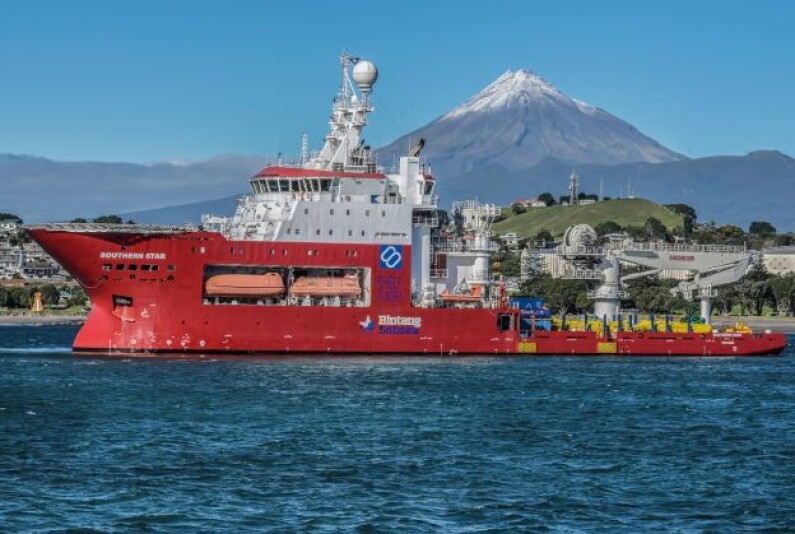
We may be fierce competitors on the sports field, but the teamwork of Aussies and Kiwis at the Tui oil field ensured phase two of the decommissioning project was a success.
Over four months, Australia-based specialist Shelf Subsea disconnected and removed about 360 tonnes of subsea steel structures and almost 40km of flexible lines from the Tui oil field.
Purpose built diving vessel Southern Star supported the work at the field throughout, with about 100 personnel onboard during the initial diving and preparatory period, and 70 during the equipment recovery.
“Most were Kiwis, which was great to utilise their knowledge and expertise,” says Shelf Subsea project director David McCarthy.
And the Trans-Tasman teamwork didn’t stop there. During the course of phase two, Southern Star made 12 visits to Port Taranaki to deliver the retrieved equipment, and David says regular communication was crucial to the project staying on schedule.
“We had some weather delays – the weather and swell conditions at the site can be quite different and more severe than here in New Plymouth, where we are a bit more protected.
“But overall, the guys offshore did a fantastic job of maintaining the schedule, and Port Taranaki were amazing. They understood we were running an offshore operation that could be affected by weather, so flexibility of schedule was needed. I was really impressed with how accommodating they were, especially at short notice a number of times,” David says.
Port Taranaki head of commercial Ross Dingle says the port was pleased to have worked alongside Shelf Subsea to ensure the important project was carried out efficiently.
“We had a great relationship with their team and it’s great our port – our facilities, lifting equipment, laydown areas, and skills – were utilised throughout.”
Port Taranaki is also looking forward to supporting the third and final phase of the decommissioning – the plugging and abandoning of the wells.
“This work is expected to begin late summer, and Port Taranaki will again provide berth space for offshore support vessels, and receive and store the well head equipment.”


